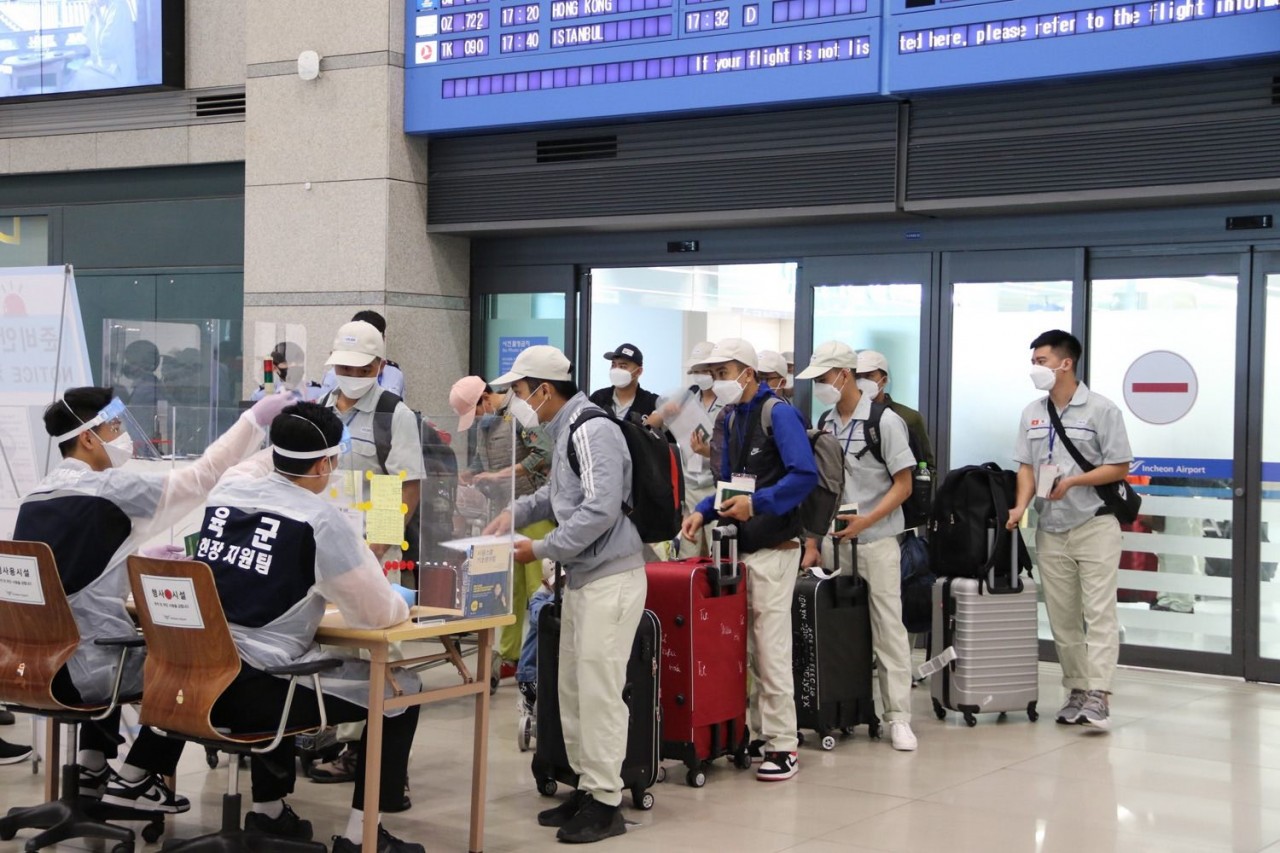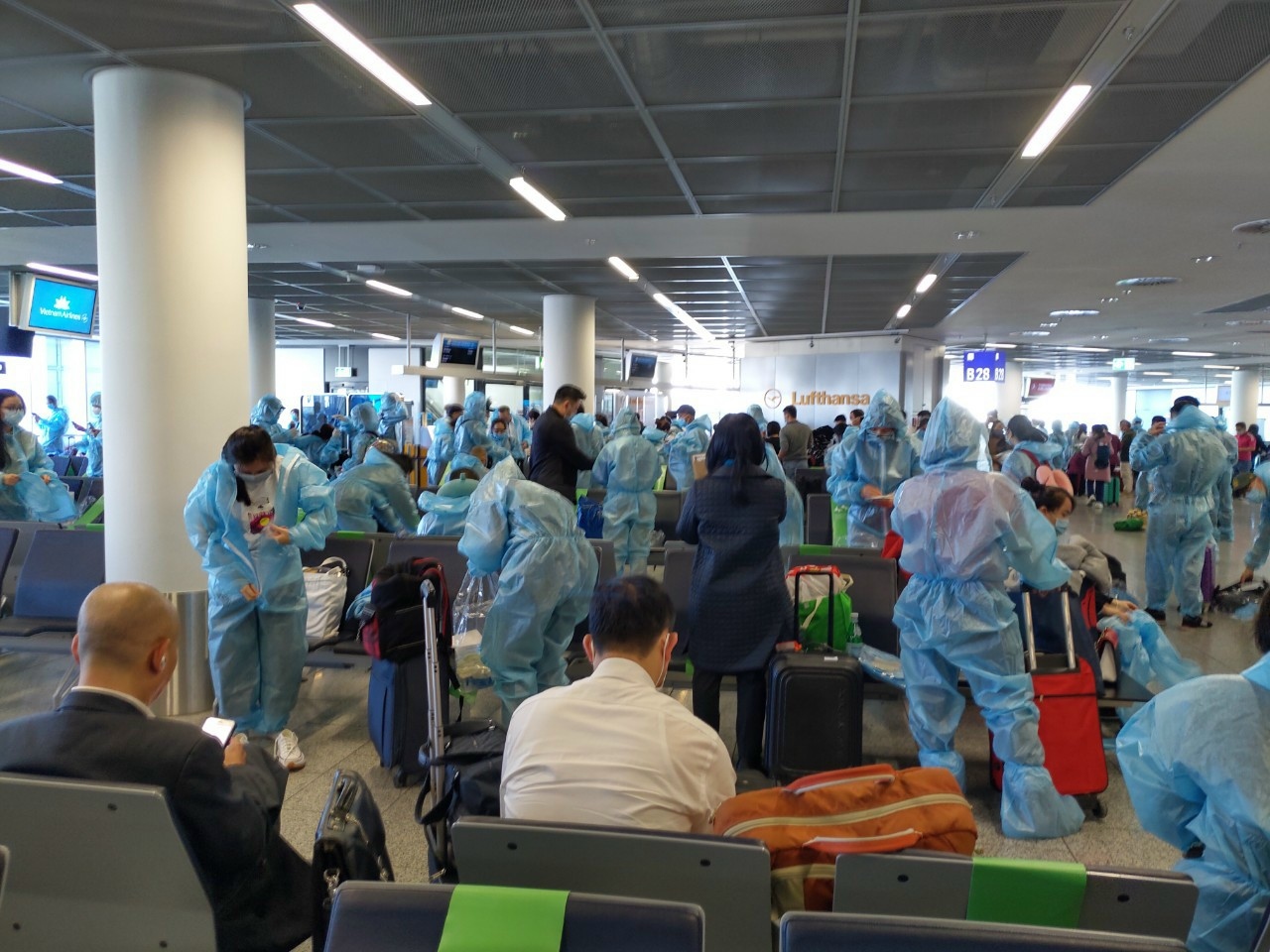
Citizen protection: A vital task of foreign service
Latest
 |
| Vietnamese migrant workers at Incheon airport, South Korea. (Photo: VNA) |
The statistics of migration
According to statistics from the Immigration Department, Ministry of Public Security, the number of Vietnamese citizens who migrated abroad in 2007 reached 1.9 million, while the figures for 2017 and 2019 were 9.2 million people and 12.7 million people, respectively.
Along with the international integration process of Viet Nam, we have been witnessing an increasing number of people leaving the country. However, since the outbreak of the COVID-19 pandemic in early 2020, the number of Vietnamese citizens belonging to four groups who migrated abroad has decreased sharply.
Regarding labour migration, since Viet Nam implemented the policy of sending employees to work abroad, the number of migrant workers is increasing.
Before the COVID-19 pandemic resurgence, there were 650,000 Vietnamese migrant workers under fixed-term contracts in more than 40 countries and territories, mainly in more than 30 different occupations, including manufacturing, nursing work, construction, agriculture, textile/garment, etc.
Female workers account for more than 30%, and the annual average remittances to Viet Nam reach around US$ 2 - 2.5 billion.
Vietnamese migrant workers mainly work in Japan, South Korea, Taiwan (China), Malaysia, and some other countries in Africa, the Middle East and Europe.
In 2019, the leading labour market for Vietnamese workers is Japan with over 82,000 employees, which is followed by Taiwan (China) and South Korea.
However, due to the impact of the COVID-19 pandemic, the number of Vietnamese contract-based migrant workers has decreased. In 2020, there are only more than 78,000 employees and the data for the first 7 months of 2021 is more than 41,000 people.
Regarding migration for study, before the spread of the COVID-19 pandemic, according to the incomplete statistics of the Ministry of Education and Training, there were over 130,000 Vietnamese students who studied overseas in about 50 countries and territories around the world.
It is estimated that the cost of Vietnamese students studying abroad is about 3 billion USD/year, and 90% of them are self-financed while the remaining 10% are students provided with state grants or aids from cooperation programs.
Among them, approximately 60-70% of self-financed Vietnamese students choose to continue their stay for work and higher education, while a number of state receivers did not return as pledged earlier.
Countries with a high number of Vietnamese students are Australia, the US, Canada, the UK, Japan and South Korea.
Regarding marriage migration, each year, there are tens of thousands of Vietnamese citizens, mainly women, marrying foreigners, accounting for 92%.
Vietnamese citizens mostly marry citizens of countries and territories such as Taiwan (China) (over 100,000 people), South Korea (over 50,000 people), the US (about 40,000 people).
Vietnamese women seek foreign husbands mostly for economic purposes. However, the divorce rate is high among marriages arranged by brokers.
For cooperation in international child adoption, all cases are based on the 1993 Hague Convention and other international treaties and agreements signed between Viet Nam and other countries.
From 2012 to 2016, more than 2,312 Vietnamese children were adopted under bilateral adoption agreements, in which, the number of adopted girls accounted for 53%.
According to the Ministry of Justice, in 2018 there were 430 Vietnamese children adopted by foreigners, while the figures for 2019 and 2020 are 359 and 246 people, respectively.
However, due to the impact of the COVID-19 pandemic, the number of Vietnamese children adopted recently has dropped sharply.
Most children are adopted in European and American countries such as Italy, France, Spain, Canada, Ireland, Sweden, Germany, Denmark...
Besides the four types of regular migration mentioned above, there remains a form of irregular migration mainly for economic purposes.
Many Vietnamese citizens migrate irregularly to seek job opportunities abroad. In recent years, irregular migration has likely increased, mostly to some European countries.
In addition, human trafficking continues to be complicated. In the period from 2008 to 2016, 8,336 people were victims of human trafficking. In 2019 there were 309 victims, in 2020 there were 121 victims, mostly women and children. However, at present, the targets of human trafficking have expanded to men, students, even newborns and organs.
 |
| Vietnamese citizens in Brazil, stranded due to the COVID-19 pandemic, prepare to return home. (Photo: Vietnamese Embassy in Brazil) |
Great efforts to protect citizens
Given the complicated and increased trend of Vietnamese citizens migrating abroad, timely protection of the legitimate rights and interests of Vietnamese citizens is considered an ever-more significant task in foreign affairs.
The Consular Department under the Ministry of Foreign Affairs is a specialized unit in charge of protecting the legitimate rights and interests of Vietnamese citizens abroad.
During the COVID-19 pandemic, the citizen protection work has faced challenges and difficulties. Since early 2020, the Ministry of Foreign Affairs has been working with relevant authorities and Vietnamese representative missions abroad to bring home around 150,000 citizens.
In general, the citizen protection work for Vietnamese abroad is conducted through a close and effective coordination mechanism, in which the Ministry of Foreign Affairs plays a central role.
In addition, Vietnamese representative missions abroad, including Embassies, Consulates General, and Honorary Consulates of Viet Nam abroad, all play the key role in the implementation of citizen protection activities.
Through connecting with the overseas Vietnamese community, the citizen protection switchboard, citizen protection hotlines of the Vietnamese representative missions work 24 hours per day. In particular, many Honorary Consuls have effectively supported the work of citizen protection, especially during the COVID-19 pandemic.
From the overview of the migration situation of Vietnamese citizens abroad as well as the practice of citizen protection work, it can be seen that there are still many difficulties and challenges, among which are the human trafficking problem and the irregular migration of Vietnamese citizens abroad, especially in the complicated situation of the COVID-19 pandemic.
To overcome those difficulties, Nam needs to create a solid legal framework for the citizen protection work, sign more cooperation agreements with other countries on related fields such as repatriation, citizenship, consular cooperation, participation in multilateral mechanisms, thereby promptly protecting the legitimate rights and interests of Vietnamese citizens in order to fulfill the goals and tasks set out by the 13th Party Congress.













